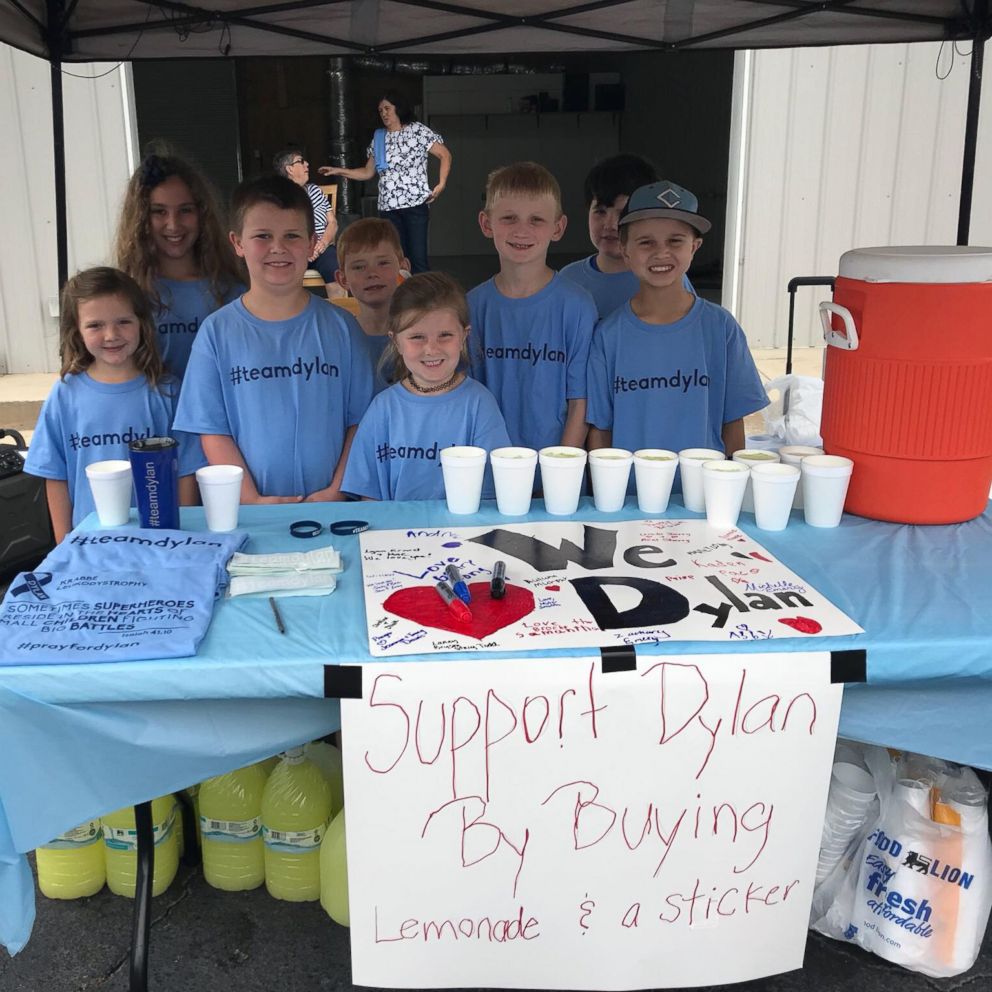Mom helps save daughter's vision by noticing cloudiness in her eyes while breastfeeding
Brandee Artale's close attention to her daughter's eyes caught a rare condition.
Brandee Artale was breastfeeding her newborn daughter late last year when, she said, she noticed something different in her daughter's eyes.
"I was really looking at her ... and I was like, something just looks weird in her eyes," Artale, of Bellevue, Nebraska, told "Good Morning America." "It looked kind of cloudy in a way."
Artale and her husband, Andrew, took their daughter, Madison, to their pediatrician, who referred them to Dr. Paul Rychwalski, a pediatric ophthalmologist and chief of ophthalmology at Children’s Nebraska.
After a nearly nine-month journey that has included three surgeries, Rychwalski credits the Artales' quick action after noticing something was off in Madison's eyes with helping to save their daughter's vision.
"It was really crucial that the parents were curious when Brandee saw something that didn't quite seem right," Rychwalski told "GMA." "It was very important."

Last October, Rychwalski diagnosed Madison with congenital cataracts, a condition that is present at birth and is so rare it only occurs in around three in every 10,000 births, according to Rychwalski.
With congenital cataracts, the lens of the eye is cloudy instead of being clear.
In addition to the cloudiness in eyes that Madison's parents noticed, other symptoms of congenital cataracts include unusual rapid eye movements, the absence of a red reflex of the pupil in photos and an infant's lack of awareness of the world around them, according to the National Library of Medicine.
In Madison's case, she was diagnosed with cataracts in both eyes, a diagnosis Brandee Artale said she and her husband were not prepared for with their first child.

While cases of congenital cataracts are often caught in the eye exam that takes place immediately after birth, the Artales said they had no signs anything was wrong with Madison's vision. Though some congenital cataracts are due to other genetic or medical problems, the cause of Madison's condition is unknown, which happens in about one-third of cases, according to Rychwalski.
"We were not prepared at all," Brandee Artale said of her daughter's diagnosis. "We thought that she was a healthy, happy baby."
In order to save her vision, Madison underwent two eye surgeries shortly after her diagnosis.
Rychwalski said the urgency of the surgeries was due to the fact that they needed to be done before she turned just 6-weeks-old.
"We want to remove this cloudiness of the lens as soon as possible, hopefully within the first six weeks of life," he said. "The brain is not fully turned on in those first six weeks so we have some flexibility, but after that the clock starts ticking."

Following the surgeries, the Artales said they used a dry erase board to keep track of Madison's intense schedule of eye drops and eye patches.
In February, Madison underwent a third surgery in her left eye due to a buildup of pressure, a common complication after cataract surgery, according to Rychwalski.
With her surgeries behind her, Madison was able to get her first pair of custom-made glasses at 4-months-old, an experience that both the Artales and Rychwalski said they saw transform Madison.
"She was fighting it at first and then she finally could see things. She looked at me like, ‘Mom, I see you,' and I was just bawling," said Brandee Artale. "You absolutely get to see her take everything in."
Added Andrew Artale, "When I look at her and see her eyes, especially when she's happy, you see the happiness in her eyes so much better."

Rychwalski said he notices Madison's mood change now when he has to take her glasses off in his office for examinations.
"Madison is very grumpy when we remove her glasses to check eye pressure, for example, and wakes up [at home] looking for her glasses," he said. "A lot of parents, at first they'll tell me, 'My child will not wear glasses,' and my retort is, 'Well, just wait and see.' When the child is presented with what real, focused vision is like, they'll rapidly take to it."
Because Madison's cataracts were caught so early on, Rychwalski said the now 8-month-old has a "very good prognosis."
"There’s a very really good chance that, if we can monitor carefully, she could have better than 20/40 vision in each eye," he said. "But lots of roadblocks can come, so this family will be a really close part of our family at Children's Nebraska for many years, just making sure she doesn't have any later complications."
The Artales said they will be forever grateful for the quick action that saved Madison's vision, calling Rychwalski a "miracle worker."

As they have learned more about their daughter's diagnosis, the couple said they're sharing their story with the hope of helping other families.
"We want to bring awareness to other families that cataracts can happen and if you see something, say something," said Brandee Artale.
Rychwalski echoed her advice for parents and caregivers, saying, "The most important thing is to know your child and always never be afraid to speak up to your doctor if something just doesn’t seem right, and to be vigilant about it."
He added that when it comes to warning signs for kids' vision, parents can pay attention to how their kids' eyes look in photos.
"It's normal [in photos] to have this red reflex, or 'red eye,' and if we have one side that's red and one side that's white, that could signal something blocking light in the eye," he said. "If you ever see an abnormal red reflex or a white pupil, that's something you'd want to talk to your pediatrician or your eye doctor right away about."







